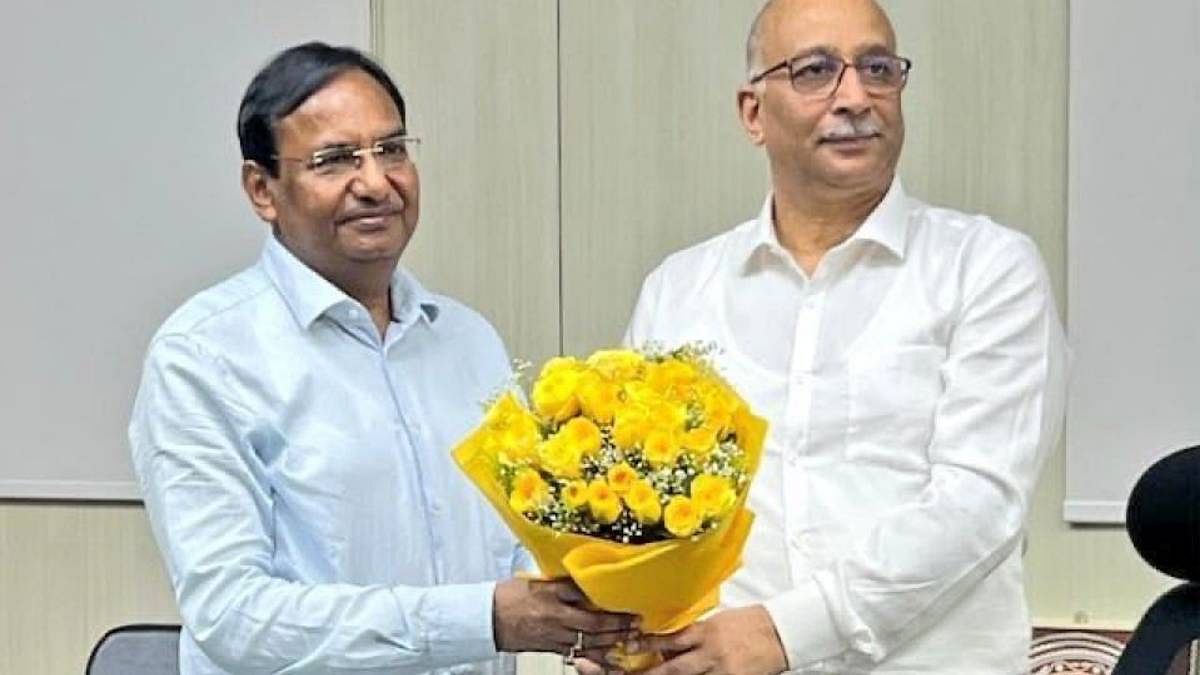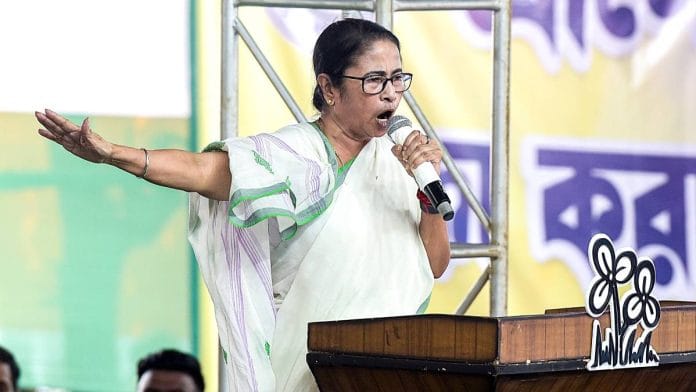Kolkata: The West Bengal government has appointed B.P. Gopalika, who retired as state chief secretary Saturday, as chief adviser to Chief Minister Mamata Banerjee for project monitoring. This is being viewed as continuation of a trend of placing retired civil servants in high-profile positions.
Manoj Pant, a 1991-batch IAS officer, replaced Gopalika after the Centre refused a second extension of three months to the latter.
According to the order issued by the Personnel and Administrative Reforms Department, Government of West Bengal, on 31 August, the former chief secretary will also hold the posts of Chairman of West Bengal Industrial Infrastructure Development Corporation and Managing Director of West Bengal Highway Development Corporation. Both posts are linked to the state’s economic development.
“Pay and other terms and conditions of the appointment shall be determined in consultation with the finance department in due course,” reads the order, a copy of which has been accessed by ThePrint.

Gopalika is the latest addition to the list of retired civil servants who have been given employment in the Chief Minister’s Office (CMO).
His predecessor H.K. Dwivedi, whose extended term as chief secretary ended on 31 December, 2023, was also appointed as financial adviser to Mamata a day after his retirement.
Before Dwivedi, former chief secretary Alapan Bandyopadhyay had been serving as the chief adviser to the CM since 2021.
Bandyopadhyay, during his tenure as chief secretary, was in the Centre’s crosshairs after he and Banerjee skipped a cyclone review meeting with Prime Minister Narendra Modi at Kalaikunda air base in May 2021.
The Centre had granted a three-month extension to Bandyopadhyay, who was due to retire on 31 May that year, but summoned him to New Delhi after his failure to attend the meeting with the PM.
CM Banerjee, however, refused to relieve Bandyopadhyay and he could not report to the Department of Personnel and Training in North Block, following which the Centre issued him a show-cause notice. He declined the extension of his service and retired, and was then appointed by the Bengal government as chief adviser to Banerjee.
In 2020, Rajiva Sinha was made the chairman of West Bengal Industrial Development Corporation a day after he retired as West Bengal chief secretary, replacing then finance minister Amit Mitra, who held the post.
It’s not just the top civil servants in West Bengal who get a sinecure post-retirement. Two other key posts of principal secretary to the CM and state security advisor (SSA) have also been entrusted upon retired officers, Gautam Sanyal and Surajit Kar Purkayastha, respectively.
Sanyal, a former Central Secretariat Service officer, is the only non-cadre officer in the state to hold the post usually reserved for IAS officers for the past 9 years.
For former Director General of Police Purakayastha, who retired in 2018, CM Banerjee carved out the post of SSA, along the lines of national security adviser, in May that year.
Another former police officer, Rina Mitra, who retired as special secretary (internal security) with the Union home ministry and was seen as a contender for the post of Central Bureau of Investigation chief, was appointed as the chief adviser to CM Banerjee on internal security in 2019, a newly created role that was defined later in a separate order.
Former West Bengal Governor Jagdeep Dhankhar had coined the term “super bosses” for the group of retired civil servants in the state who continue to call the shots.
In January this year, BJP leader Suvendu Adhikari had urged the IAS Association in West Bengal to raise its voice following the appointment of IAS officer Nandini Chakravorty as state home secretary by superseding “13 additional chief secretaries and five principal secretaries who are senior to her”.
“Chief secretaries never truly retire in West Bengal, they keep serving the chief minister. Mamata Banerjee disregards rules and it is evident with her concocted cabinet running the show from Nabanna (State Secretariat),” Adhikari said to ThePrint.
However, former civil servant and MP from Bengal’s ruling TMC Jawhar Sircar pointed out that absorption of top officers in plum posts after retirement was an all-India phenomenon.
Speaking to ThePrint, Sircar said that “several retired civil servants usually go on to head tribunals and government bodies as chairmen. These are roles that don’t clash with the statutory post and powers of, say, the chief secretary, the top bureaucrat of the state. It is true that most trusted officials are now retained as advisers. One reason could be by the time a bureaucrat becomes a chief secretary, he has little service tenure left”.
“Many CMs feel that they could benefit from their lifelong expertise by keeping them as advisers. This helps to maintain continuity in policies and tide over crises in governance. But the chief secretary must be allowed to function as chief secretary and the advisers respect this,” he added.
Also Read: ‘Mamata’s trusted officers don’t retire’ — chief secretary joins list as industry body head
‘Retirement reward all-India trend’
Jawhar Sircar, a 1975-batch IAS officer, also said that advisory posts have become prominent in recent times and trusted officers are strategically placed post-retirement.
“This advisory post system for retired officers was not seen much in the past, but is rather widespread now. Look at Uttar Pradesh, Madhya Pradesh or even the central government. In the PMO (Prime Minister’s Office), you will see several retired civil servants being retained in niche roles. Sometimes, the Centre also strategically places bureaucrats in states that are governed by the BJP to ensure its grip,” he explained.
“Many central government secretaries or DGs of police who are close to the top are sent back to become chief secretaries or DGPs of their states nowadays, much more than ever before, like Y.B. Khurania who became the DGP of Odisha after the Centre approved his premature repatriation to his parent cadre Odisha while he was serving as special DGP of the Border Security Force,” he added.
“Central (govt) secretary D.S. Mishra came to the PM’s good books by taking up his dream project, the central vista project, and pet programmes like Swachh Bharat and Smart Cities mission. He was then sent as chief secretary to Uttar Pradesh and given three extensions. People say the Centre wanted its man to head Yogi Adityanath’s administration and obviously keep the Centre in the loop. The PM sent his own topmost bureaucrat in the PMO, Nripendra Misra, to build the Ram Mandir in Ayodhya,” Sircar explained.
The postings are also seen as a “reward” for retired civil servants.
Speaking to ThePrint, former cabinet secretary K.M. Chandrasekhar said that post-retirement roles are being awarded for a while now across the country.
“It’s up to the PM or CM to retain retired bureaucrats who have strong knowledge about their previous departments, and it can also be seen as a reward for the work done so far,” he said.
He added that “once a bureaucrat retires, he doesn’t look back, he isn’t any longer bound by the rulebook”.
“He or she can at best ideate and advise. This barely hampers the morale of serving officers who have a designated job,” said Chandrasekhar.
(Edited by Nida Fatima Siddiqui)
Also Read: Mamata’s ‘super cabinet’ — how 4 retired officers are running the state with CM’s trust







Bengal is steeped in corruption – from top to bottom.
It’s really sad and disheartening.
When we were young, the city of Calcutta was like a fairytale for us. Whosoever visited the great city, on returning, had to quench the curiosity of everyone in the village. Usually people got tired answering a huge range of queries.
Not fair to say this after a mandarin in another model state was given fifteen extensions.